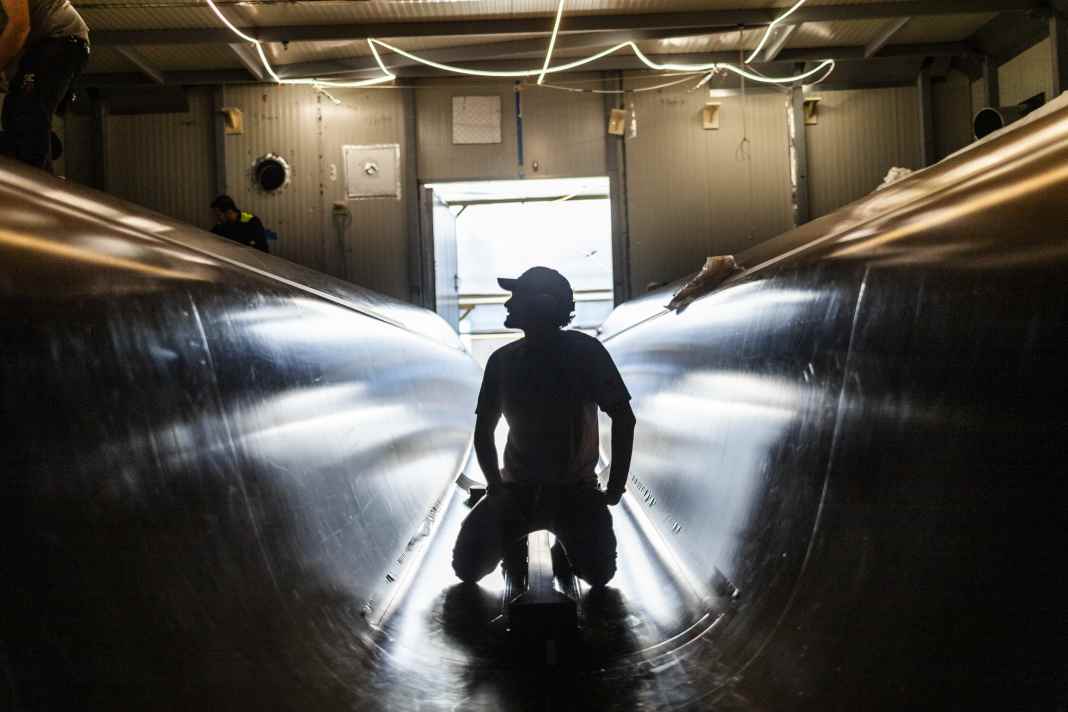Ferrari Hypersail: 100-foot spoiler - Verdier and Soldini give Ferrari many wings






For a flying horse from Ferrari, the logical project name would have been Pegasus. But Giovanni Soldini will drive the "Cavallino Rampato" (rearing horse) over the water. And since Ferrari is successful with hypercars on the road in endurance races, the term "Hypersail" seems just as appropriate. And emphasises the focus on high technology. The engineers from Marinello are experts in minimising take-off weights, optimising aerodynamics and controlling movable spoilers, yet they are unable to increase the sail area as much as the horsepower.
Ferrari goes for it: Wings, wings, wings
The performance booster for the 30 metre long Hypersail project are foils in four versions: Elevator on the single rudder, pivoting T-foils on the curved arms and a horizontal wing at the end of the keel bomb. This, in turn, is part of a canting keel that has never before been seen on full-foil sailboats of this size. This daring and extreme mix of buoyancy aids was the brainchild of Guillaume Verdier. Who else? Like no other, the French designer fuelled the renaissance of hydrofoiling, which has been giving sailing wings since the 1930s.
With the flood of dynamic attachments, Verdier is once again breaking new ground. T-foils combined with a fixed keel "Flying Nikka" 60 feet in length, the skimming Baltic 111 relies on a fixed keel with Dali foils. "Raven". In the America's Cup, the AC75 racers do not use keels at all in their inshore races. Another hint that Ferrari and Soldini are attracted to the offshore stage is the outrigger rig. A novelty for foilers and familiar from the 60-foot Imocas. They rely on foils in the form of Dali's Moustache and tilting keels, which are in zero position in flight or skimming mode.
Flying without a combustion engine on board
Ferrari's 100-footer is probably very close to the concept that Guillaume Verdier would also like to see for the Vendée Globe. The Imocas would "only" have to be supplemented with foils, so-called elevators, on the rudders in order to take off constantly and for longer periods of time. Unlike the boats of Boris Herrmann and Co, Giovanni Soldini - the 59-year-old Italian has broken numerous offshore records - will not have an internal combustion engine on board. The energy, for example for the hydraulics of the foil arms, is to be generated during the journey, although the first visualisations do not show any turbines for generating electricity. In any case, the keel would provide a harvesting option for a hydrogenerator system that would always remain in the water.
Technology transfer for offshore records
Technology transfer from the world of Ferrari sports cars is to be used in the flight control system, which enables sailors to fly stably and without rodeo interludes over oceans that are constantly in motion. Central to this are sensors that scan the wave pattern ahead and trigger automatic equalising movements of the trim tabs on the foils. Nine nautical patents have already been registered and a further six are currently being drafted. Scuderia carried out aerodynamic and structural calculations to ensure the performance and safety of the monohull foiler.
Hypersail is intended to fly across the world's oceans over long periods of time without stopovers and, as Ferrari calls it, without pit stops or external support of any kind. The iconic car brand and the ocean-going heroe are probably aiming to set offshore records, with a crew and not as part of a fleet. When both foil arms are folded down halfway - which can also provide stability in strong winds in addition to tacking and jibing - the carbon racer has a maximum width of 20 metres. The launch and initial sea trials are scheduled for 2026.
Soldini is looking forward to new flight controls
"Hypersail is a new challenge that will take us beyond our limits and expand our technological horizons. At the same time, it is in the Ferrari tradition and draws inspiration from our hypercar, which has won the 24 Hours of Le Mans three times. Designing an ocean-going sailboat is perhaps the ultimate expression of endurance," explains Ferrari President John Elkann.
"I am delighted and honoured to be taking part in this adventure," explains Giovanni Soldini, Team Principal of Hypersail. "An exciting challenge that relies on a truly unique team that combines the excellence of Ferrari and the skills of designers specialising in offshore sailing. The meeting of different cultures and advanced technologies makes it possible to build a boat that is revolutionary in many ways. From a nautical point of view, it is innovative in terms of the way it is built and how it will fly; in terms of systems, Ferrari's contribution favours the development of unprecedented on-board control. To best prepare for the variability and strength of the phenomena and conditions in the ocean, we need to find a balance between exploring extreme performance and maximising reliability."

